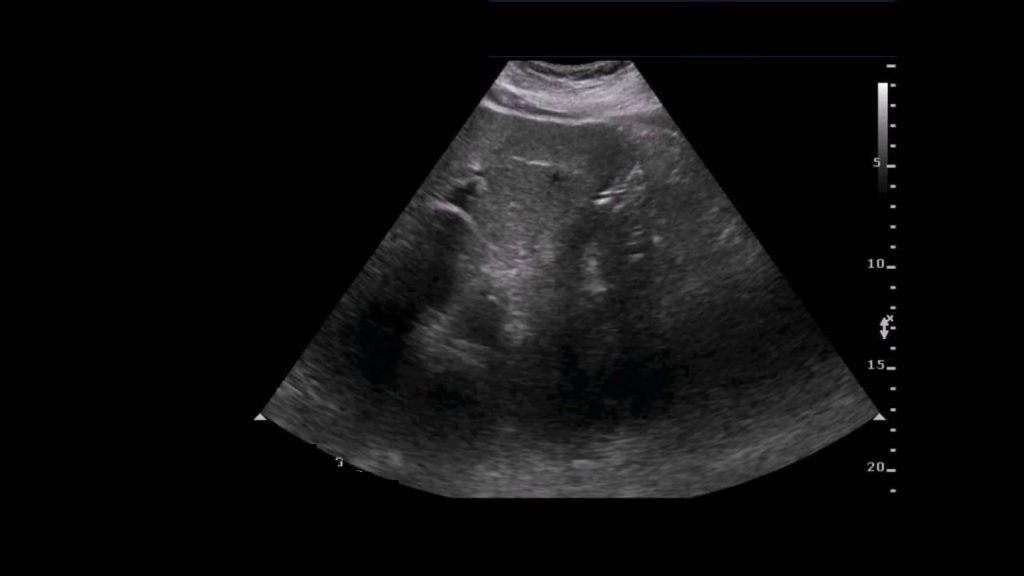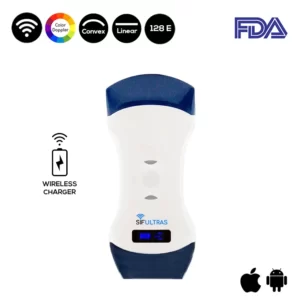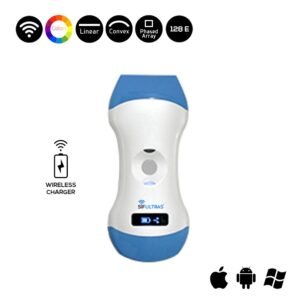Confirmation of Nasogastric Tube Placement
Ultrasound provides good diagnostic accuracy in the confirmation of appropriate Nasogastric tube placement.
Gastric tubes are commonly used for giving drugs and nutrition directly into the gastrointestinal tract (tube that digests food) for people who are unable to swallow. Feeding via a tube that is misplaced in the trachea (wind pipe) can result in severe pneumonia (infection of the lungs).
Although Nasogastric Tube (NG) tube application is generally considered safe, it can result in complications such as pneumothorax, pneumomediastinum, subcutaneous emphysema, pneumonia, pulmonary hemorrhage, empyema, hemothorax, mediastinitis, bronchopleural fistula, perforation
Therefore, confirmation of tube placement in the stomach after tube insertion is important. Gastric tubes are also used to reduce the pressure of the stomach after providing breathing assistance through masks, which is mainly used in resuscitation.
Which ultrasound is best for Confirmation of Nasogastric Tube Placement?
The SIFULTRAS-5.42 as, a 7.5 MHz linear probe is used for neck visualization at the level of cricoid membrane. A 3.5 MHz convex probe was used to visualize subxiphoid and gastroesophageal region.
Rapid and safe placement of the nasogastric tube is one of the most common and life-saving procedures in emergency department (ED).
Hence comes in the ultrasound scanner as a widely available, easy applicable, provides repetitive evaluations, bedside evaluation, fast, cheap, lack of ionizing radiation, high spatial resolution, and provides dynamic imaging.
Ultrasonography is useful for confirming the results of auscultation after NGT insertion among patients with low consciousness at an emergency center. When ultrasound findings suggest that the NGT placement is not gastric, additional chest X-ray should be performed.
Ultrasonography is convenient, fast, noninvasive, and has been widely used as a diagnostic examination technique since its introduction. It has almost no spatial or temporal restrictions, and its effectiveness as a diagnostic tool and procedure has been established worldwide.
Verifying NGT placement with ultrasonography has the potential to reduce complications, save time, and reduce unnecessary radiation exposure.
The assessment of the proper EFT through abdominal US is practical and safe, with fast execution and possibly associated with satisfactory diagnostic accuracy.
This procedure is typically performed by an Emergency Medicine Specialist.

[launchpad_feedback]
Disclaimer: Although the information we provide is used by different doctors and medical staff to perform their procedures and clinical applications, the information contained in this article is for consideration only. SIFSOF is not responsible neither for the misuse of the device nor for the wrong or random generalizability of the device in all clinical applications or procedures mentioned in our articles. Users must have the proper training and skills to perform the procedure with each ultrasound scanner device.
The products mentioned in this article are only for sale to medical staff (doctors, nurses, certified practitioners, etc.) or to private users assisted by or under the supervision of a medical professional.



